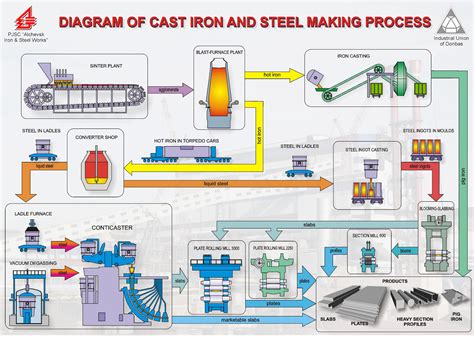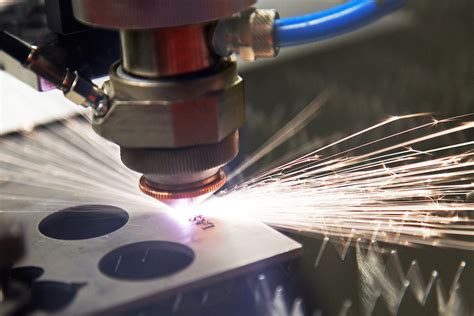cutting metal fabrication process Choosing a metal fabrication method suited to a given project depends on the designed part’s geometry, the product’s intended purpose, . See more Rigidized metals provide an innovative way to enhance the appearance and functionality of stainless steel surfaces. Through a specialized texturing process, these metals acquire unique patterns and textures, offering .
0 · types of metal manufacturing processes
1 · types of metal fabrication processes
2 · metal fabrication process flow chart
3 · manufacturing processes for metals
4 · manufacture of fabricated metal products
5 · how to fabricate metal
6 · fabricated structural metal manufacturing
7 · basic metal fabrication
Horizontal Metal Fence. This metal fence allows clear views into the yard, and promises for low maintenance and durability against the heat and cold of the Colorado climate. The black metal is repeated in architectural details on the house, as are the .
Choosing a metal fabrication method suited to a given project depends on the designed part’s geometry, the product’s intended purpose, . See moreChoosing a custom metal fabrication shop or custom metal manufacturer that will best fulfill a project’s needs is an important decision that can affect the manufacturing rate, production quality, and cost-effectiveness of a given project. To help in the selection . See moreThis guide provides a basic understanding of metal fabrication, the different methods, and considerations for choosing a fabricator. For more . See more Metal cutting is a subtractive metalworking process of dividing a metal workpiece into multiple parts using force or other erosion techniques. The cutting action can be generated with blades or methods like electrical .
The metal fabrication process encompasses manufacturing techniques like bending and cutting, using an array of advanced equipment to produce complex metal shapes, components, and .The sheet metal fabrication process is an intricate journey from raw metal to a finished product. It involves various steps, ensuring the final product meets specific standards and functions. In . One of the most versatile metal fabrication processes is cutting. On the surface, the process is nothing more than cutting large pieces of metal into smaller ones. Cutting is quite intricate and involved, however. – Cutting: a basic fabrication process where the material is cut into smaller sections or parts. It can make the sheet metal into pieces of the required size and shape. The .
In metal fabrication, there are a few ways to cut metal, each with its own tools and techniques. There's sawing, the old-school method, straight and simple. Then there's .Metal fabrication is the creation of products or structures through cutting, bending, and assembling metal materials. It is typically a process that consists of putting things together . At its core, metal fabrication involves cutting, shaping, and assembling metal materials to create structures or products. This versatile process is the backbone of countless .
Choosing a metal fabrication method suited to a given project depends on the designed part’s geometry, the product’s intended purpose, and the materials used in crafting it. Common metal fabrication processes are as follows: Casting; Cutting; Drawing; Folding; Forging; Extrusion; Machining; Punching; Shearing; Stamping; Welding; Casting In this post, we will break down the five processes that give the manufacturing industry the ability to cut through metals. Chip Forming is a metal cutting process that uses mechanical means like sawing, milling, drilling, and turning. This method was pioneered by Kivima and Franz in the 1950s. Metal cutting is a subtractive metalworking process of dividing a metal workpiece into multiple parts using force or other erosion techniques. The cutting action can be generated with blades or methods like electrical discharges and water jets.
The metal fabrication process encompasses manufacturing techniques like bending and cutting, using an array of advanced equipment to produce complex metal shapes, components, and assemblies.The sheet metal fabrication process is an intricate journey from raw metal to a finished product. It involves various steps, ensuring the final product meets specific standards and functions. In this article, we’ll explore the nine vital steps in sheet metal fabrication, providing valuable insights for businesses and industry professionals. One of the most versatile metal fabrication processes is cutting. On the surface, the process is nothing more than cutting large pieces of metal into smaller ones. Cutting is quite intricate and involved, however. – Cutting: a basic fabrication process where the material is cut into smaller sections or parts. It can make the sheet metal into pieces of the required size and shape. The cutting process involves the use of different tools.

types of metal manufacturing processes
In metal fabrication, there are a few ways to cut metal, each with its own tools and techniques. There's sawing, the old-school method, straight and simple. Then there's shearing, great for cutting sheet metal. Laser cutting is another method, precise .Metal fabrication is the creation of products or structures through cutting, bending, and assembling metal materials. It is typically a process that consists of putting things together using raw materials, like metal, expanded metal, welding wires and rods, cast metal, and more. The process usually consists of three main stages: At its core, metal fabrication involves cutting, shaping, and assembling metal materials to create structures or products. This versatile process is the backbone of countless industries and contributes to the creation of everything . Choosing a metal fabrication method suited to a given project depends on the designed part’s geometry, the product’s intended purpose, and the materials used in crafting it. Common metal fabrication processes are as follows: Casting; Cutting; Drawing; Folding; Forging; Extrusion; Machining; Punching; Shearing; Stamping; Welding; Casting
In this post, we will break down the five processes that give the manufacturing industry the ability to cut through metals. Chip Forming is a metal cutting process that uses mechanical means like sawing, milling, drilling, and turning. This method was pioneered by Kivima and Franz in the 1950s.
Metal cutting is a subtractive metalworking process of dividing a metal workpiece into multiple parts using force or other erosion techniques. The cutting action can be generated with blades or methods like electrical discharges and water jets.
The metal fabrication process encompasses manufacturing techniques like bending and cutting, using an array of advanced equipment to produce complex metal shapes, components, and assemblies.The sheet metal fabrication process is an intricate journey from raw metal to a finished product. It involves various steps, ensuring the final product meets specific standards and functions. In this article, we’ll explore the nine vital steps in sheet metal fabrication, providing valuable insights for businesses and industry professionals.
One of the most versatile metal fabrication processes is cutting. On the surface, the process is nothing more than cutting large pieces of metal into smaller ones. Cutting is quite intricate and involved, however. – Cutting: a basic fabrication process where the material is cut into smaller sections or parts. It can make the sheet metal into pieces of the required size and shape. The cutting process involves the use of different tools.

In metal fabrication, there are a few ways to cut metal, each with its own tools and techniques. There's sawing, the old-school method, straight and simple. Then there's shearing, great for cutting sheet metal. Laser cutting is another method, precise .
Metal fabrication is the creation of products or structures through cutting, bending, and assembling metal materials. It is typically a process that consists of putting things together using raw materials, like metal, expanded metal, welding wires and rods, cast metal, and more. The process usually consists of three main stages:

20 gauge sheet metal for sale

types of metal fabrication processes
Photochemical machining is the process of using photolithography to create a pattern on metal which is then etched to form thin, intricate metal parts. What is Photochemical Machining?
cutting metal fabrication process|manufacture of fabricated metal products